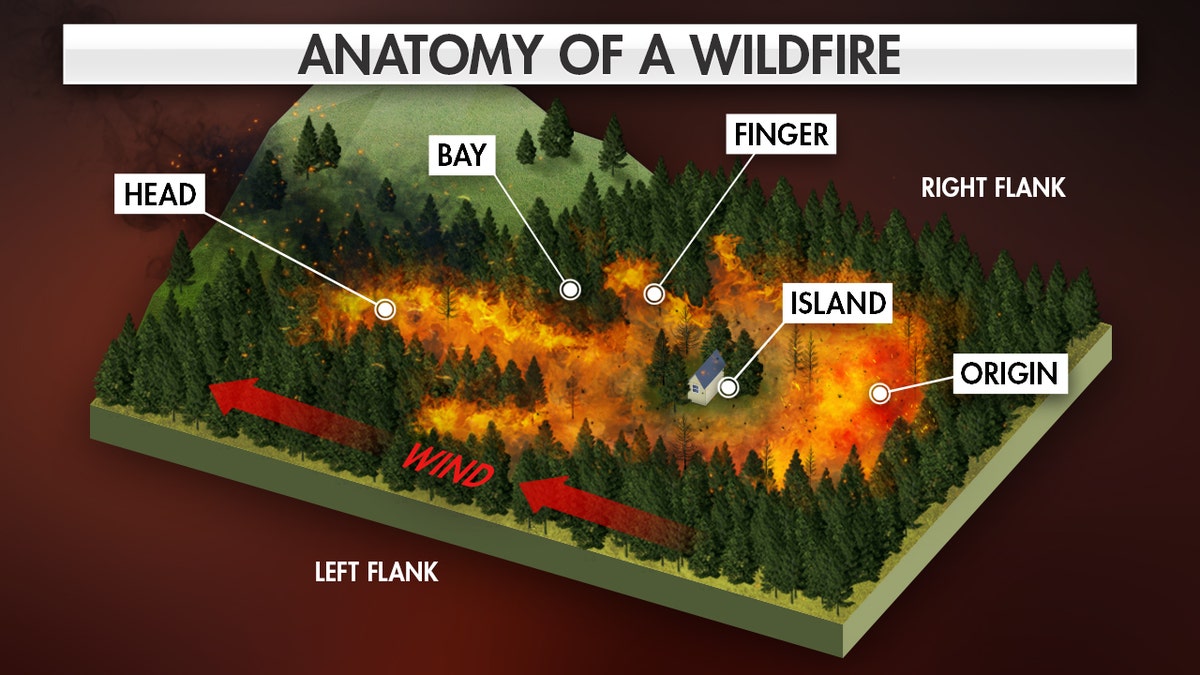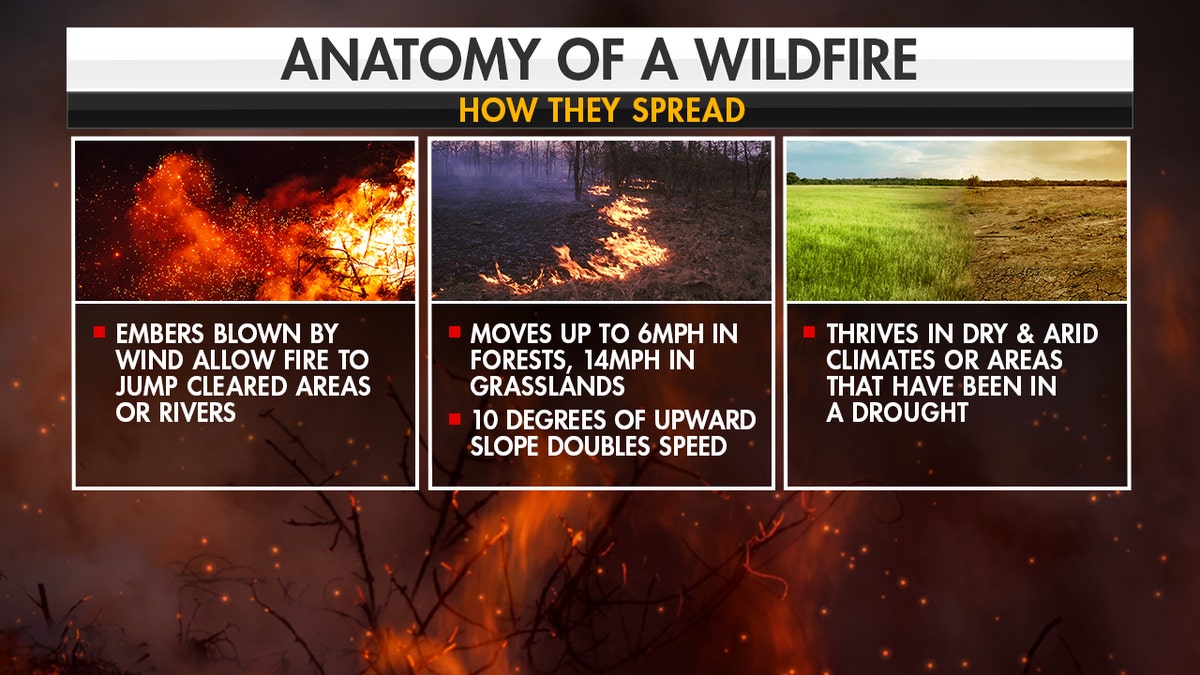California sees its worst fire season on record, spreading to Washington, Oregon
In Southern California the Santa Ana winds are kicking up causing more problems for crews trying to contain the flames; Jeff Paul reports on the latest.
Every year wildfires leave a trail of devastation across parts of the U.S. but there's more to the science behind wildfires and their deadly “anatomy.”
Wildland fires “are fires that occur on undeveloped land such as forests, prairies and shrublands; they include both wildfires and prescribed fires,” according to the United States Geological Survey.
Citing 2000 to 2017 data based on Wildland Fire Management Information (WFMI), and the U.S. Forest Service Research Data Archive, the National Park Service reports that nearly 85% of wildland fires in the U.S. are caused by humans.
LIGHTNING FROM RARE 'VIOLENT' THUNDERSTORMS IN CALIFORNIA SPARKS DOZENS OF WILDFIRES ACROSS BAY AREA
“Human-caused fires result from campfires left unattended, the burning of debris, equipment use and malfunctions, negligently discarded cigarettes, and intentional acts of arson,” the National Park Service says on its website.
Lightning, however, can also cause fires, as seen in recent wildfires in California.
“Fires are usually started by unusually long-lasting hot lightning bolts,” explains the National Park Service. NASA notes that wildfires caused by lightning often occur in remote areas that are not easily accessible.

The anatomy of a wildfire. (Fox News)
Downed power lines can also spark wildfires. Set against this backdrop, utilities employ planned blackouts to prevent wildfires.
Higher temperatures that relate to drought can also increase the risk of fire, which thrives in dry and arid conditions.
“Conditions in the weather and environment—such as drought, winds and extreme heat—can cause a fire to spread more quickly,” explains the National Oceanic and Atmospheric Administration (NOAA) on its website.
CALIFORNIA UTILITY USING 'SMARTER, SHORTER' TACTIC FOR BLACKOUTS TO PREVENT WILDFIRES
Oxygen, heat and fuel are the three factors necessary for combustion and the production of flames, notes the National Wildfire Coordinating Group. “Removal of any of the three factors causes flame production to cease,” it explains.

Causes of wildfires. (Fox News)
Wildfires can spread quickly, consuming everything in their path. The flames can travel at up to 14 mph, according to National Geographic. Embers blown by the wind can help the fires “jump” rivers and areas that have been cleared of “fuel,” such as brush.
Key parts of wildfire and forest fire anatomy are defined as bay, finger, head, flanks, back, island and the point of origin. A bay is “a marked indentation in the fire perimeter, usually located between two fingers,” according to the government of Nova Scotia’s website, while a finger is an elongated burned area or areas extending from the main body of the fire.

How wildfires spread. (Fox News)
The head of the fire is defined as the “portion of the fire perimeter having the greatest rate of spread and frontal fire intensity which is generally on the downwind and/or upslope part of the fire.” The back of the fire is the part of the perimeter opposite the head and the flanks are the areas of perimeter between the head and the back “roughly parallel to the main direction of spread,” according to the government of Nova Scotia. Islands are areas of “unburned fuel” within the fire’s perimeter and the point of origin is defined as the location or locations within the fire perimeter where ignition first occurred.
CLICK HERE TO GET THE FOX NEWS APP

Wildfire containment. (Fox News)
The impact of wildfires on communities and the natural environment can be devastating and the cost of the fire suppression is astronomical. According to the U.S. Forest Service, the cost of battling the 2017 fire season exceeded $2.4 billion.
Follow James Rogers on Twitter @jamesjrogers









































